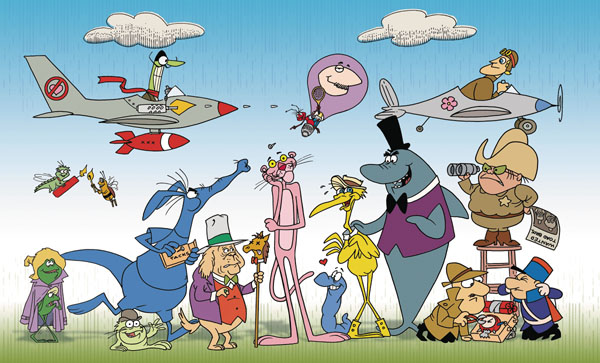
Last week, Jerry posted about David DePatie’s passing. I interviewed him 25 years ago by telephone, on September 6th, 1996, and I asked him about his theatrical work and especially about the ethnic humor in much of it. He was, I think, the second animation veteran I interviewed, and I’ll always have great respect for his openness about the use of ethnic caricature in his films.
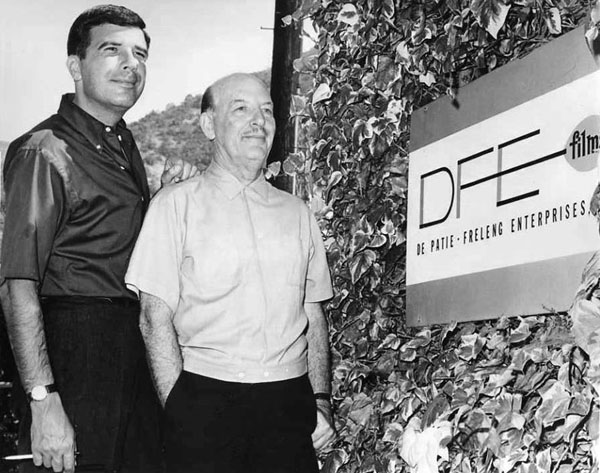
On the Daffy Duck-Speedy Gonzales pairing: It was “a concept that Warners felt that they wanted,” “a mandate from Warner Brothers to us.” He explained that Warner Brothers wanted to make completely different cartoons and use different pairings for them. He revealed, “Friz and I never really cared for that particular concept, but everyone else seemed to like it.”
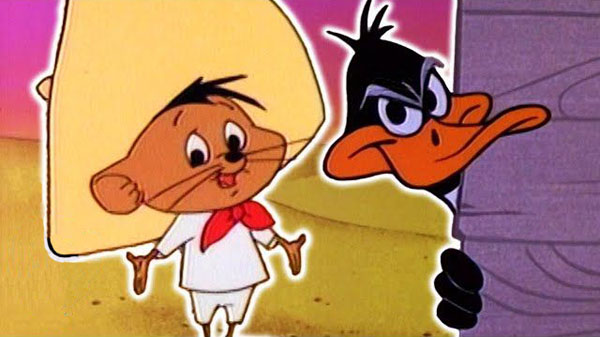
On the “Tijuana Toads” series: “We had an enormous contract with United Artists to fulfill.” It was for 156 cartoons. While thinking of new series ideas, “the Mexican, ethnic type of character, that had worked so successful in Speedy Gonzales, came to us.” John Dunn, a writer for the studio, came up with the idea of the “Toads” characters. He remembered, “It was a very successful series,” a “very, very great success.”
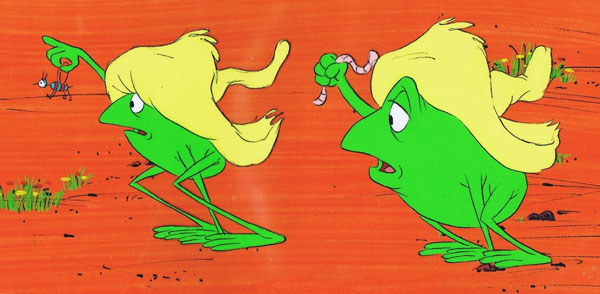
 On the “Blue Racer” series character the Japanese Beetle: He said, “The beetle is Oriental—Japanese, no doubt, but Oriental for sure.” He reasoned, “Everyone felt that a lot of good gags could come from it [the ethnic caricature].” He noted, “It seems like poking fun at certain ethnic groups had always spelled success. Friz had always felt that way in his cartoons, especially with Speedy.”
On the “Blue Racer” series character the Japanese Beetle: He said, “The beetle is Oriental—Japanese, no doubt, but Oriental for sure.” He reasoned, “Everyone felt that a lot of good gags could come from it [the ethnic caricature].” He noted, “It seems like poking fun at certain ethnic groups had always spelled success. Friz had always felt that way in his cartoons, especially with Speedy.”
On the “Hoot Kloot” series: After the “Pink Panther” short Pinto Pink (1967), “United Artists latched on to a Western motif.” He explained, “Our distributors felt that in their library, they’d like to have some type of Western character.” However, “Hoot Kloot” was “of our entire body of work, one of the least successful series we made. Nobody really liked it.”
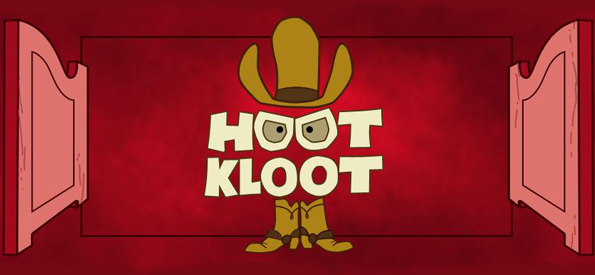

I’m sorry he’s gone. Truly the end of an era. Rest In Peace, David H. DePatie.


 Christopher P. Lehman is a professor of ethnic studies at St. Cloud State University in St. Cloud, Minnesota. His books include American Animated Cartoons of the Vietnam Era and The Colored Cartoon, and he has been a visiting fellow at Harvard University.
Christopher P. Lehman is a professor of ethnic studies at St. Cloud State University in St. Cloud, Minnesota. His books include American Animated Cartoons of the Vietnam Era and The Colored Cartoon, and he has been a visiting fellow at Harvard University.



























Thanks for sharing your memories of David DePatie. It’s good to know he was so open and generous with you.
I seem to recall that in the Hoot Kloot cartoons, the Indians used Yiddish slang just as they did on “F Troop” (which goes back to the Book of Mormon’s account of the Americas having been settled by the lost tribes of Israel). I don’t remember if they were ever portrayed as hostile. The humour, such as it was, came mainly from Kloot’s inability to make himself understood by the people he was supposed to serve and protect. Similarly, there was a running gag on “Sanford and Son” where a white cop’s officious locutions continually had to be translated by his partner. Race prejudice in law enforcement was a big issue at this time, in the aftermath of the urban riots of the ’60s, and it’s interesting to see it reflected in the entertainment of the period.
Then there’s Kloot’s outspoken talking horse Fester, whom Kloot never addresses by name (only as “horse”) and who bitterly resents his subservient status. “I look at you, Mister Kloot, and I see a bigot! A gol-danged anti-horse bigot!” It’s hard to avoid reading a racial subtext into the relationship between these two characters.
As for the Japanese Beetle, there really is such an insect (just as there really is a kind of snake called the Blue Racer). By 1970 it had become a destructive invasive pest throughout much of North America. The cartoon character likewise had a voracious appetite, but making it a buck-toothed, squint-eyed, karate-chopping yellow bug with a so-solly-excuse-prease accent is just the laziest sort of writing. (I don’t especially want to criticise John W. Dunn, as he had an awful lot on his plate, and some of his writing is quite good, even inspired.) Now, I have a friend who discovered, much to his consternation, that Japanese beetles love marijuana plants. That’s a trait that could have made for some groovy storylines in the early ’70s. DePatie-Freleng wouldn’t have touched it, of course, but maybe Bakshi?
The “pairing” of Speedy and Daffy equaled the finesse and exuberance of a 1960 Popeye!!
Nah, far far worse..,Popeye and Bluto-I mean, Brutus, were established as logical rivals, Daffy and Speedy werent.,:ANYHOW thanks, and I do recognize Japanese Beetles here on the west coast. (PS “GOLDILOCKS from spring 1970, both the very first evening prime time production and special from the studio, with Bing Crosby, Mary Frances Crosby and Paul Winchell (as the “anti-Villian”,to use tvtopes.org) is underrated..Greg Ehrbar did a very good 2015 review oif the Disney record based i it;PS The Sherman Brothers scored for that; The Cat in the Hat led Dr.Suess specials in the lien for DFE)>
I’m glad to know I’m not the only one who hated Hoot Kloot.
Interesting how ethnic humor was once so successful and popular, among whom had to be white liberals who now make the loudest fuss about it now. (The presumed targets of the jokes tend to be more ambivalent, perhaps feeling that arguably less than flattering depictions of their ethnicity in forgettable animated cartoons should only be the worst problem they face in society, at any rate not worthy of their blood pressure.)
It’s my first time seeing Hoot Kloot. The sheriff looks like a TV character Sheriff Joe Higgins who got his break doing the character for Dodge commercials but made appearances on “everything”.